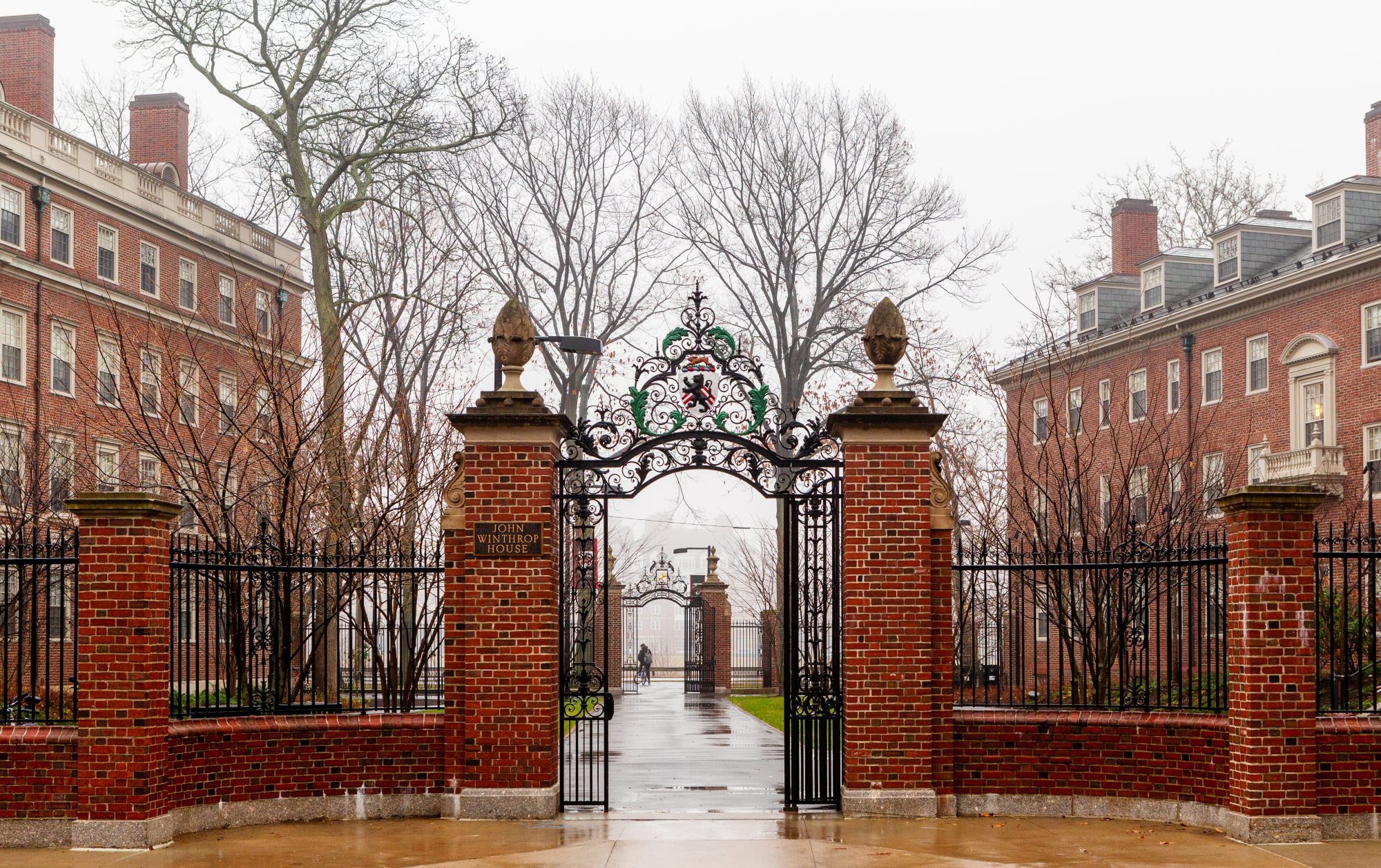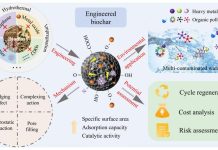Eric van Gemeren, Chief Technology Officer for Honeywell Process Solutions, discusses Honeywell’s sustainable solutions and the environment
My name is Eric van Gemeren, and I am the Chief Technology Officer for Honeywell Process Solutions. I’m responsible for our research and development, engineering, technical problem-solving, and field service troubleshooting.
Could you summarize some of the most promising digitalization processes and services you’re working on now?
There are three big themes in digitalisation Honeywell Process Solutions is focusing on.
The first is helping our end users eliminate end-of-life and part obsolescence. The electronics and software business is a fast-moving industry. In particular, vendors are changing all the time. For them, when they install process equipment like a control system in their plant, it needs to run for the life of the plant. Yet, these parts eventually break down and need replacing. But sometimes replacements are difficult because those parts have eroded and become obsolete.
In order to help solve this issue, Honeywell Process Solutions explores the technologies by virtualizing hardware into software solutions that fully protect the investment already put into control systems whilst protecting intellectual property. This is because the ‘know-how’ embedded in the control system truly is intellectual property businesses rely on to run effectively. So that’s bucket number one.
Bucket number two, if you will, is this thing that we call industrial autonomous
Bucket number two, if you will, is this thing that we call industrial autonomous.
Bucket number two has many different features to it as well as different solutions. Fundamentally, Honeywell Process Solutions can take intelligence built in at the individual device level and present that to an operator, a human being, in a way that makes them more effective. Hence, they receive access to better information and recommendations that they can act on with little experience on the job.
Bucket number three is our focus on the safety of humans – this is absolutely paramount. For instance, the hazardous areas in a refinery often place workers in harm’s way. So, using higher fidelity instrumentation gives better actionable advice that informs workers of safety issues from afar.
Finally, it’s about helping individuals climb the learning curve a lot faster
These technological advances help individuals climb the learning curve faster. Due to various socioeconomic issues, many end users are struggling to attract and retain talent, hiring new people without much time to develop the expertise and experience they need to be as proficient at their jobs.
So the question we must ask ourselves is how to use the intelligence available in the system to help eliminate human error whilst making people act like they’ve been there for 30 years.
Overall, digitalization allows us to explore new technologies that reduce the cost of new facility construction, reduce the amount of time required to build a new facility, and reduce the risk that is associated, whether that’s a refinery, chemicals plant, power plant or poll and or a paper mill.
As our world continues to evolve and the population grows, we need to invest in better infrastructure to bring economic benefits to our end users but, importantly, reduce the cost and the time required to do so in the way I have set out.

What is so special about Honeywell, and what is it that differentiates Honeywell from other companies?
For me, there are two key points.
The biggest thing that makes Honeywell different is our focus on the end user
The biggest thing that makes Honeywell different is our focus on the end user. As you see, during our events, we don’t run them as a sales pitch. The primary purpose here is to listen to our customers, to better understand what’s working and not, and to understand what problems they’re facing that we haven’t yet solved.
Whilst developing and deploying technology for the sake of technology can be fun, it’s not really going to move the needle. So it has to begin with grounding yourself in the customer’s experience and being humble enough to listen to the customer. It’s humility to listen and focus on what will make a difference for them.
This is something that has to be built into the culture and the dynamics of who we are. It starts with the message from the top. It starts with the priorities of the leadership team. It comes all the way down to being willing to invest in events like this to ensure we’re listening to our customers and giving their feedback.
Honeywell is different, we have the courage to say: but there should be a better way
Other organizations try and do it, but Honeywell takes it to a different level. And that is customer-focused innovation.
Secondly, is way we approach digitalization that we are not interested in protecting the status quo and the existing investment in the hardware we currently have. It would be easy for us to tell our customers why they must keep buying the same hardware they bought for the past 40 years. Honeywell is different; we dare to say: but there should be a better way.
For example, if you look at our new technology, Hive, this is a radical departure from the norm. And while it has incredibly compelling business benefits for our customers, it is a threat to our own business because it means they’ll buy a lot less hardware and consume fewer services. But Honeywell would rather do this than leave that up to somebody else to do to us.
The culture of cannibalization is a natural, healthy part of a high-functioning business. That’s a cultural difference that has to be bred in the leadership team and communicated throughout the entire organization.
Whilst I could discuss other factors such as our talent pool that separates us, I think what really makes Honeywell different is our whole philosophy, strategy, and approach being so grounded in starting with the customer and working our way backwards into technology and having the humility to be able to disrupt our own business rather than waiting for somebody else to do it.
I imagine that the customers will value that and remember that?
The proof is in the pudding. More than 52% of all refineries and 70% of all polyethene plants in the world run our processes our systems and control systems.
I think that the proof of the pudding is in the eating
I think that the proof of the pudding is in the eating. We have the largest installed base in the world. We have 1200 customers at our flagship event HUG EMEA; most customers pay to come here for the opportunity to spend time with us. And I think it’s because we give them so much in return, and we’re making that commitment to them that they’re willing to invest in us.
What are the biggest challenges or hurdles that Honeywell faces in terms of digitalisation?
Regarding digitalisation, it’s managing all the competing priorities that we get in customer input. So, when you deal with large organizations, the feedback you get from them is not always internally consistent. You get a lot of competing ideas, priorities and demands from different parts of the organization.
Sorting the wheat from the chaff
Some of the biggest challenges are really sitting down and sorting the wheat from the chaff and helping them make tough trade-off decisions about what is more important to them and what is really going to make a difference to them. As an engineer, that is a tough decision to make. Next, we’ve created a new widget. But sometimes, that’s not what the customer needs. Sometimes the customer doesn’t have a technology problem but just needs to fix a process or their organisational roles and responsibilities.
One of the other biggest challenges is competition for talent
This is a natural consequence of having a customer-centric innovation pipeline, helping sort the wheat from the chaff and make tough tradeoff decisions about what’s really most important to them. I think one of the other biggest challenges is the talent competition.
Graduate interest in the pulp and paper or refining industry is not typically high. The immediate attraction is somewhere such as Google or Facebook. Therefore, competing for that talent to attract and retain them is a challenge.

We experience different specialities in different parts of the world, and it needs a different approach to be able to work with our employees and connect them together across the world. That is not an easy thing to do, especially because it tends to produce disparate centres of excellence globally.
For example, Honeywell Process Solutions has a huge R&D (Research and Development) centre down in Sydney, Australia and are world-leading experts in human factors engineering, such as HMI layouts. In India, we have a centre of excellence around digitalization data analytics and processing. Then in Phoenix, Arizona, it specialises in microelectronics instruction. How does one get all three of those teams to work together seamlessly in real-time?
The ultimate end product that Honeywell Process Solutions have to deliver to the customer has to bring the best of all of their organizations together – a really is a global exercise in people management.
How do you gather the opinions of your customers, not just those in universities but outside of universities too?
It starts with user group events like this. Looking at the agenda, you’ll notice that we have user group focus groups organised on an industry-by-industry basis. Beyond that, we have strategic relationships with longstanding customers where we host a formal working group created between Honeywell and that end user. We also spend extensive periods of time in those customer facilities learning what it’s like to live in their shoes. And again, those are not sales events. Those are my team – the development engineers who go into the customer’s plant and shadow an operator for a day to learn. They want to learn of concerns and opportunities to improve. This is an exercise we call ‘Voice of the Customer’. It’s a structured discovery process that starts out with a series of learning objectives. We then develop a discovery plan that uses a scientific approach to help us structure our interaction with the customer to go out and specifically uncover our learning objectives. It’s a disciplined process that takes a lot of time to complete, requiring you to have a close relationship with that end user.
As you can imagine, we’ve done this not only on a regional basis but on a much wider basis too. For instance, the requirements in China are different to Western Europe.
Secondly, you perform it on an industry vertical basis. Again, carrying this out in refining is entirely different than doing this in petrochemical, for example. Next, we develop specific customers who tend to be leading thinkers. Some companies are more open to this approach than others. But, because we’ve been doing this for several generations, we’ve built those relationships with those end users where we jointly invest our time into these discovery exercises to capture that voice of the customer. As you can see, it’s a very laborious and ongoing process. It never finishes. We do it all the time annually with our biggest customers.
How has Honeywell changed and altered its process over the past few years?
Even before the pandemic, and even taking aside technology, our relationship with our customers is always a very delicate dance because there are two personalities within every customer.
When we talk to the operators, who use our products daily, they have a very specific set of asks of us, often unique and individual problems that require specific and unique solutions. In this way, they like to have custom-developed solutions uniquely tailored to their effects. But ultimately, all our products actually get bought by their purchasing department. The purchasing department has an entirely different wish list. They want a solution that can be compared, apples to apples, to at least three other competitors. Because every time they want to do an acquisition, they want to take it out to a competitive bid reducing everything to its lowest common denominator to compare and contrast them on a one-on-one basis and buy at the lowest price.
So, when you talk with a customer, it’s always important to understand who in that customer you are talking to and what their demands are. Because especially in these days where inflation is such a huge problem, and the energy transition is making it tougher for them to justify large capital investments. Their purchasing teams are trying to drive everything to the lowest possible dollar value. This is not always conducive to developing and delivering the technology that their actual operations people want. Hence, we end up having to spend a lot of time actually getting both parts of the customer to talk to each other to better articulate the business value that may come from it.
Now, putting that all aside, the pandemic has hugely affected the requirements that we see coming from our end users, who are focusing a lot now on remote operations. This was something that they always experimented with but, till now, didn’t take seriously.
To a large degree, it’s changing the requirements we get from our customers, such as enabling their move to a more decentralized workforce that enables remote operations and working from home. We suspect that’s a trend that’s going to continue and one that’s difficult to deal with. Working remotely; it works for some people but not for others. So, getting creative about how we deploy that technology really is a challenge.
The third element is the changing technology itself. So, 20 years ago, distributed control was of primal importance. They wanted control systems that were 100% bulletproof. That means for certain, this plant will run safely, and if there’s an excursion, it will shut down safely. Customers didn’t want to see any technology that didn’t have at least 100 hours of installed experience.
Now, there’s this thing called the Internet of Things. To be clear, the Internet of Things is not new. We’ve been doing this for a very long time, long before it was called the Internet of Things. But when it became more pervasive in people’s lifestyles where they could get things like their thermostat in their home or their dog watering bowl in an iPhone app, people suddenly thought, ‘Can I do some of the same things in my process control plans?’
As it had become so pervasive in their personal lives, now it has started to change their expectations of what they wanted in their professional lives as well. While the Internet of Things has many great technical strategies and benefits it can offer, it also comes with a dark side. That, of course, is the cyber security and the robustness of the solutions they bring. It invites vulnerabilities because now you can’t combine your entire control system into the fence line of your facility.
Suddenly, there’re a thousand holes in that firewall for all these different apps creating an entirely different set of challenges, such as ransomware attacks. So, it’s a delicate balancing act. Customers continue evolving their expectations of what they want and what’s important. We’ve continued to evolve the technology in terms of the cyber fences and cybersecurity to try and plug as many of those leaks as we can. However, it’s still an ongoing evolution and comes down to buying preferences and behavior in terms of value.
What would you advise young people wanting to get involved in this industry?
First, it’s awareness. It’s creating awareness that there’s some unbelievable technology that we’re working on that they might not know about and they might not be aware of.
Second of all, young people are more environmentally conscious than older generations. However, they do not think in terms of the practical solutions that actually could be offered to act on this consciousness that can help save the planet. To me, those are exciting messages to articulate to young people but are challenging between different demographics.
For instance, the way I communicate and engage with the world differs from how the younger generation engages with us. So, it’s figuring out how we adapt, the ways that we communicate, the way we connect with those younger generations to be able to raise that awareness and help them understand why our work is so critical.
The challenge here is that it can be a costly affair. You have to invest money and time at a time when inflation is high, and there’s increased worry about the economic outlook. So, balancing the long-term and the short-term game is always an ongoing challenge.
Our focus is also on social variance and attracting talent which is also a bigger issue than just Honeywell as a company.
For instance, I live in Texas, and when we look at access to proper education and giving young people the resources they need, it’s one thing to get them interested in pursuing careers in science and technology. Yet, it’s an entirely different thing to actually help them to pursue those careers such as getting into a post-secondary education, internships etc. And that’s one of the reasons why I’m so excited to be part of the Honeywell Process Solutions team. We have a very strong internship program that helps reach out to young people to equip them with the resources they need. But this is a challenge because this is a fight on the ground daily and in individual communities. It’s not a global program with a global strategy that you can just expect it to happen. It requires dedicated people on the ground in these communities.
It’s the culture of Honeywell that really makes us unique
At Honeywell, we don’t call them ‘employees’ or ‘associates’ but Future Shapers. It’s a reflection on how we believe we all have an obligation not just to our end users but also to the communities that we live in to imagine the type of future we want to be a part of and the behaviours and commitments that are required from all of us to bring that about. It’s the culture of Honeywell that really makes us unique.
Do you think the U.S. government is doing enough to support the kind of initiatives that you are offering?
It’s a really difficult question to answer and one where I’m going to look at it purely from the technology perspective and think about it from a macroeconomic view.
Take carbon capture. The collective wisdom of the scientific community today holds that we are not on a path to guarantee our one-and-a-half degrees Celsius commitment to the Paris Climate Accords. We can only achieve this if we invest in certain technology, some of which we’ve discussed today. But certainly, Honeywell is not the only organization in the world that’s working on this. But here’s the problem, where’s the economic incentive to invest in that technology and that capability because who’s the customer? Ultimately, we can sell products all day long to a company when those products are directly aligned with something that they deliver to their customer. Again, I’ll use the refining example.
If I’m a refinery, I have got to turn crude oil into a mixture of gasoline, diesel and jet fuel, and there’s a whole chemical process that goes in between. We can show exactly how our tools and solutions help them get more production out of every barrel of crude oil that they put in because we’re talking in their language about something that goes out the door. They don’t necessarily see the climate as a product. They don’t see it as a deliverable that they get paid for. Therefore, they’re not as aggressive in adopting these kinds of technologies. Some people argue that’s where government needs to come in and start passing regulations. On this, I think that will be something that we’ll only learn in history 20 years from now when we look back and look at all the different ways that it was approached.
I think there absolutely is a role for government intervention to help focus the organizations on the solutions that aren’t necessarily aligned with their immediate economic interests but are with the shared interests we all have. The right answer is a really perplexing issue.
Ultimately, part of the answer to that question is even if we were to just combine ourselves into one geography and talk about the United States, it’d be easy for a government to weigh in and say, for instance, we’re going to introduce a carbon tax. We’re going to mandate that all of these companies buy these solutions and implement these carbon reduction strategies. Ultimately, this has got to get passed on, and the cost has to be paid somewhere. This all, ultimately, is coming down to the consumers. So, those already doing their part in recycling plastics, saving water, and saving electricity, and have already gone to electric vehicles will have to pay for it too through their taxes or surtaxes that come on other products they buy.
Is that fair? It’s a really complex question that has less to do with economics and laws and more to do with how we as a species feel about the personal responsibilities and of larger things that transcend us. It’s also more complicated because I am never going to see the benefits from any of these efforts. Our grandchildren will, but it’s hard to convince people that they got to pay now for something their grandchildren may see.











